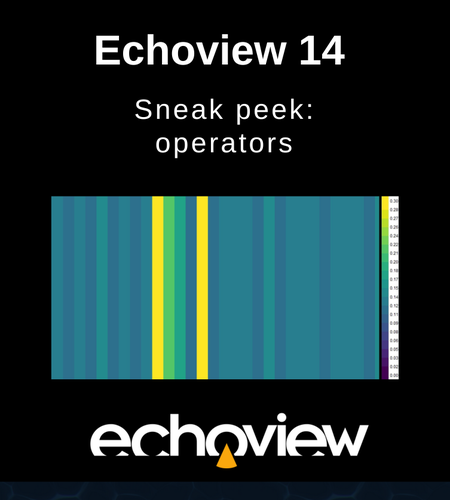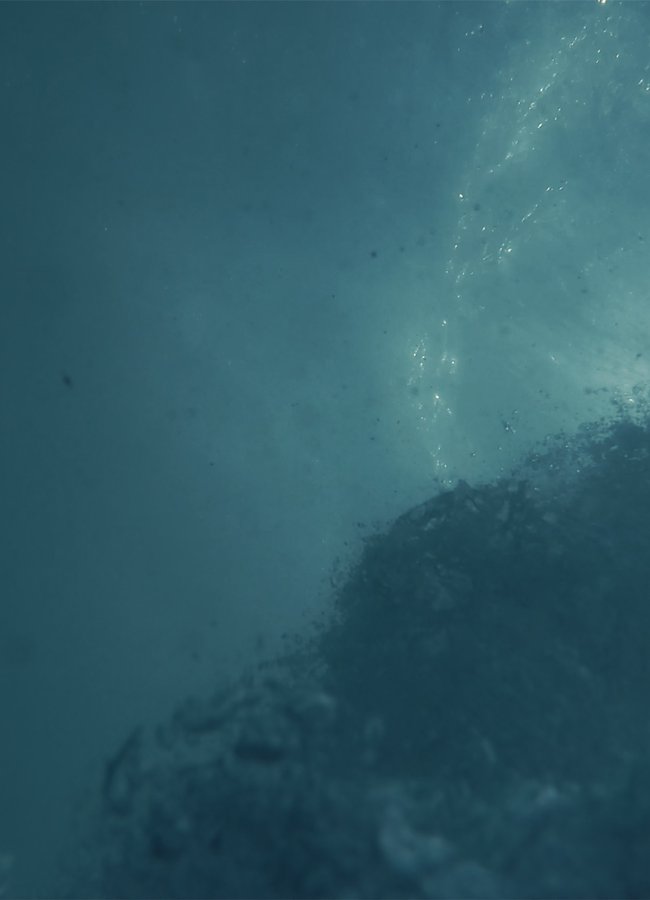Echoview 14 brings four handy new operators, plus new features in several existing operators.
Join opposing pings
This operator gives you the ability to join and visualize single beam data collected from platforms where co-located transducers are pointing in opposite directions, such as a glider with transducers facing both upwards and downwards.
The following echograms (kindly shared by Chad Waluk and Kelly Benoit-Bird at Monterey Bay Aquarium Research Institute, USA) show data collected using an EK80 Mini from an autonomous underwater vehicle (AUV). Two pairs of multiplexed Simrad transducers were attached to a passively-moving gimbal that maintained their orientation, with one set of transducers looking upward and one downward as the vehicle undulated through the water. The top panel is the upwards data, middle is the downwards data, and the bottom panel is the resulting echogram created using the Join opposing pings operator.
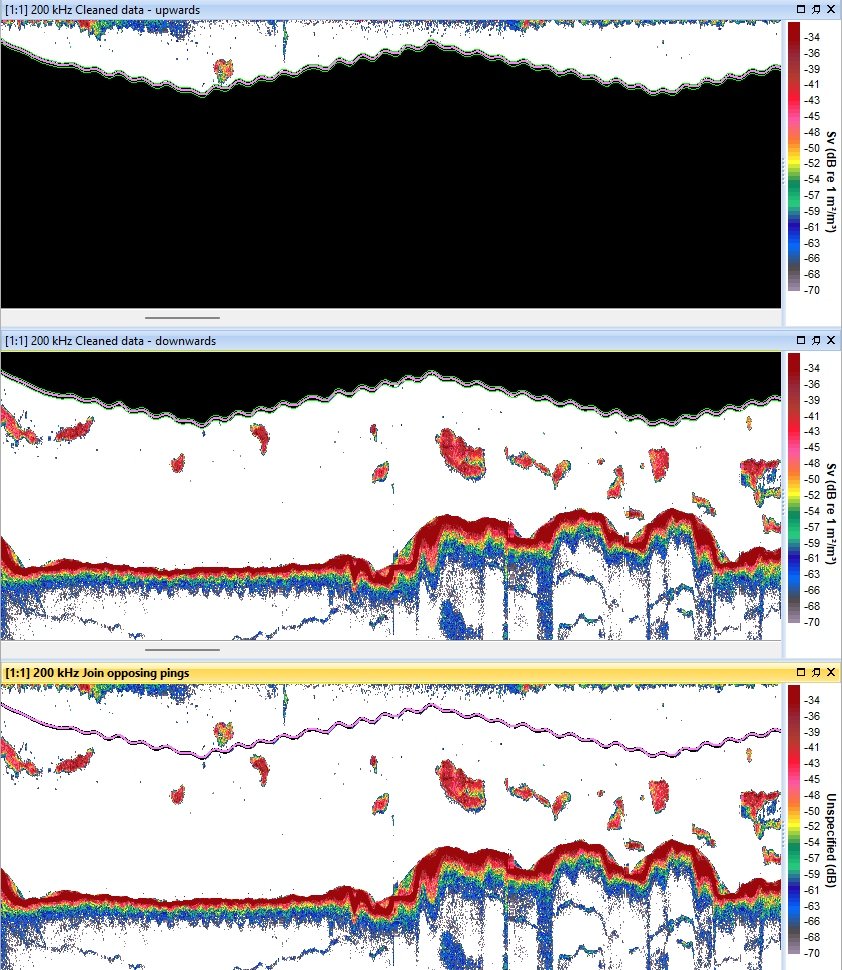
Ping time difference
The Ping time difference operator replaces samples in every ping with a number that represents the time elapsed (seconds) between the current and the previous ping, making it easy to explore your data and visualize its collection characteristics, and to filter data based on time using downstream operators like Data range bitmap.

Resample multibeam pings
This operator allows you to adjust your multibeam data by modifying pings in one or more of the following dimensions:
- Sector angle
- Beams per ping
- Samples per beam
- Start and stop range
This makes it easy to manipulate multibeam pings to smooth data, to regularize sample geometry between variables or across pings, or to reduce the volume of data being processed.
Some multibeam systems have changing sample geometry from ping to ping, meaning that until now it wasn’t possible to use operators (such as Multibeam background removal) that require regular ping geometry when calculating statistics. The Resample multibeam pings operator can modify your data into a regular grid and make it easy to use Echoview’s other multibeam operators.
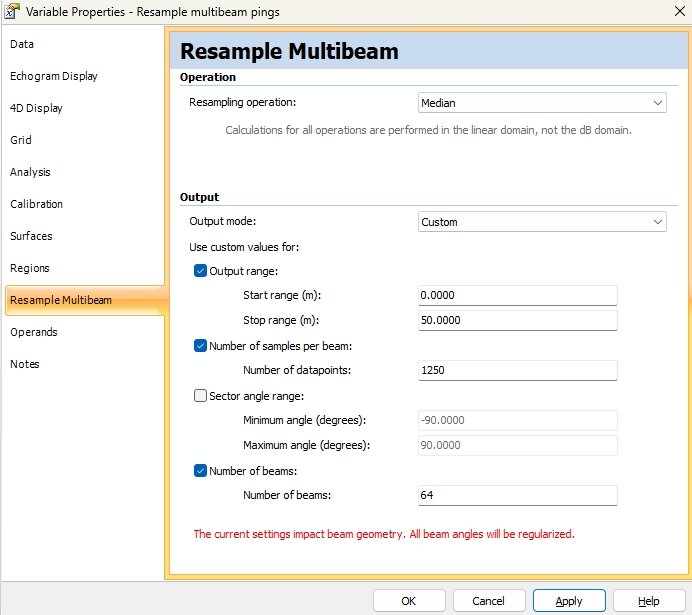
Combine fans
Combine Fans is used to combine the echograms for multibeam pings collected at the same time, such as dual head Kongsberg EM systems. Once combined, ping data can be easily used for standard multibeam data processing tasks, such as detecting the bottom, schools, individual fish, gas seeps and, more.
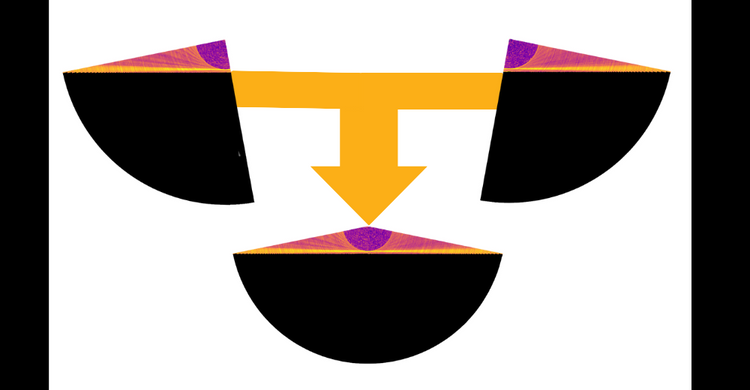
Other changes
Finally, new settings and capabilities have also been added to existing operators, such as the option to show the results of Background Noise Estimation without TVG added, and the Code operator can now access a ping’s position, heading, speed, and vessel log distance.
Echoview 14 will be available for beta testing very soon.
Did you spot our previous sneak peeks?
- Support for Lowrance fish finders, Kongsberg kmall files, and more
- 3D transducer geometry widget to orient your data
- Transect-based analyses
For the latest news and updates, please join our mailing list.
